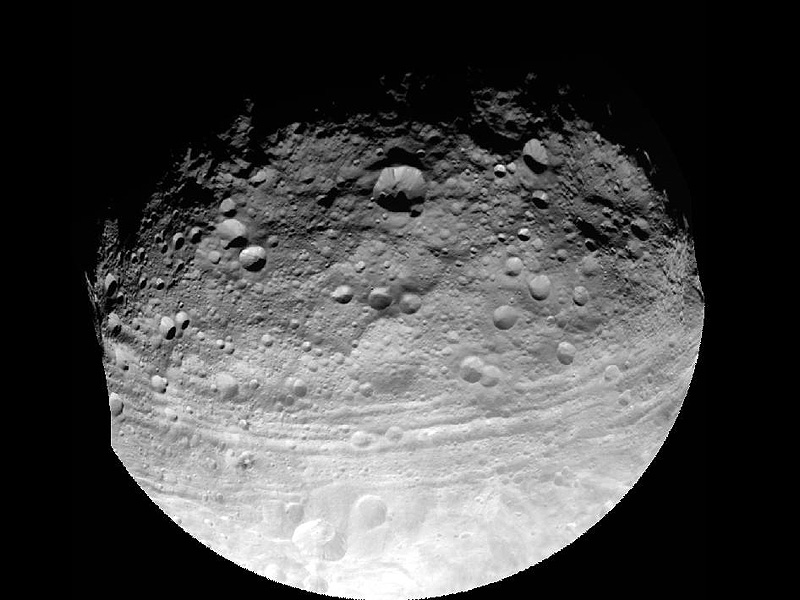This full view of the giant asteroid Vesta was taken by NASA’s Dawn spacecraft, as part of a rotation characterization sequence on July 24th, 2011, at a distance of 3,200 miles (5,200 kilometers). A rotation characterization sequence helps the scientists and engineers by giving an initial overview of the character of the surface as Vesta rotated underneath the spacecraft. (Image credit: NASA/JPL-Caltech/UCLA/MPS/DLR/IDA)
Home This full view of the giant asteroid Vesta was taken by NASA’s Dawn spacecraft, as part of a rotation characterization sequence on July 24th, 2011, at a distance of 3,200 miles (5,200 kilometers). A rotation characterization sequence helps the scientists and engineers by giving an initial overview of the character of the surface as Vesta rotated underneath the spacecraft. (Image credit: NASA/JPL-Caltech/UCLA/MPS/DLR/IDA) This full view of the giant asteroid Vesta was taken by NASA's Dawn spacecraft, as part of a rotation characterization sequence on July 24th, 2011, at a distance of 3,200 miles (5,200 kilometers). A rotation characterization sequence helps the scientists and engineers by giving an initial overview of the character of the surface as Vesta rotated underneath the spacecraft. (Image credit: NASA/JPL-Caltech/UCLA/MPS/DLR/IDA)
This full view of the giant asteroid Vesta was taken by NASA’s Dawn spacecraft, as part of a rotation characterization sequence on July 24th, 2011, at a distance of 3,200 miles (5,200 kilometers). A rotation characterization sequence helps the scientists and engineers by giving an initial overview of the character of the surface as Vesta rotated underneath the spacecraft. (Image credit: NASA/JPL-Caltech/UCLA/MPS/DLR/IDA)


